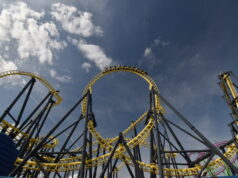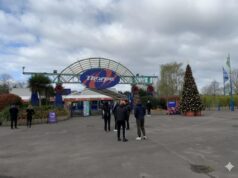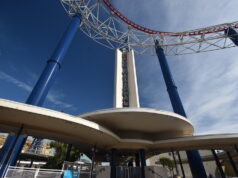
If you’ve visited a theme park in the last decade, you might have noticed something: the classic, stage-based shows that once filled our afternoons are disappearing. From charming musicals to elaborate stunt performances, these spectacles, which were once the heartbeat of the park experience, are vanishing. But is this a loss we should mourn, or simply a necessary evolution in the theme park industry?
The Golden Era of Park Shows
For decades, traditional park shows were central to the theme park experience. Disney’s live musicals, Universal’s stunt shows, and smaller local performances across the UK offered families a chance to pause, rest, and be immersed in storytelling. These shows were often meticulously choreographed, with catchy songs, impressive costumes, and memorable characters that became synonymous with the parks themselves.
They weren’t just entertainment—they were moments of shared wonder. Many adults today still recall seeing their favorite characters live on stage, wide-eyed and starstruck.
Why Traditional Shows Are Declining
Several factors explain this decline:
- Changing Audience Expectations: Modern visitors crave adrenaline and immersive experiences. Roller coasters, interactive rides, and augmented reality attractions draw attention away from slower-paced stage shows.
- High Production Costs: Live shows are expensive. Paying performers, maintaining sets, and scheduling multiple daily performances can strain a park’s budget. Rides and digital experiences, in comparison, often have a longer lifespan with lower ongoing costs.
- Shorter Attention Spans: With social media and fast-paced entertainment dominating our lives, many guests now prefer experiences that deliver instant gratification rather than a 20–30 minute performance.
- Space Limitations: Theme parks are always expanding, and prime real estate is often repurposed for new rides, themed areas, or food experiences that generate more revenue per square foot.

The Case for “Sad”
For traditionalists, the decline is undeniably disheartening. Live shows have a unique charm that rides can’t replicate. They offer storytelling, humor, and emotional connection in a format that is intimate and human. Watching a skilled performer bring a character to life in front of your eyes can be magical in a way even the most technologically advanced ride cannot match.
Moreover, shows are inclusive—they allow visitors of all ages and physical abilities to experience the magic. As parks become increasingly focused on thrill-seeking attractions, some guests may feel left out.
The Case for “Necessary”
However, evolution is part of any entertainment industry. Theme parks are businesses, and they must adapt to survive. Modern attractions offer scalability, reusability, and social media shareability that traditional shows often can’t match. Immersive experiences, virtual interactions, and themed rides resonate with today’s audiences and can even introduce younger generations to storytelling in innovative ways.
The decline of traditional shows doesn’t necessarily mean the end of live performance—it may simply be transforming. Street performers, pop-up experiences, and interactive shows embedded within rides are filling the gap, albeit in a different form.
Finding a Balance
Perhaps the question isn’t whether shows are “dying” but how parks can strike a balance. Classic stage shows can coexist with modern attractions if parks prioritize them as part of the overall experience. Limited-run performances, seasonal shows, or strategically placed live entertainment could retain the charm of the past without compromising the park’s growth or profitability.
The decline of traditional theme park shows is both sad and necessary. It’s sad because we are losing a nostalgic, communal form of entertainment that once defined the park experience. Yet it’s necessary because audience expectations, economics, and technology are reshaping how we engage with storytelling. The challenge for modern parks is to honor this legacy while embracing the future—finding new ways to capture the magic of live performance, even in an age of thrill rides and digital spectacles.
The truth is, while the curtain may be falling on classic stage shows, the story of theme park entertainment continues to evolve—and that, in itself, can be magical.









